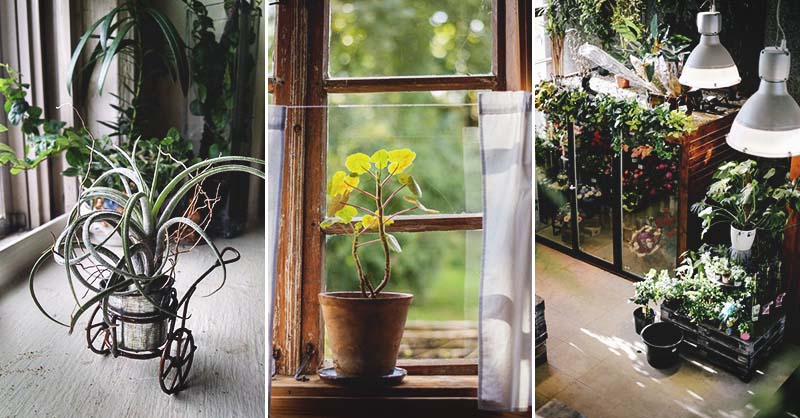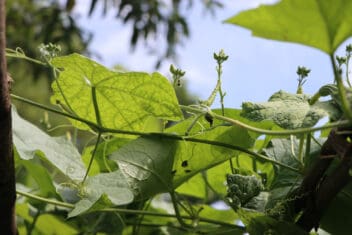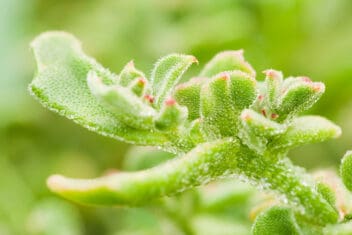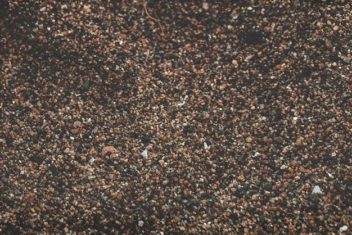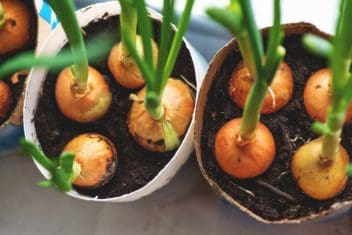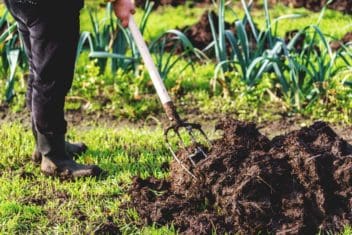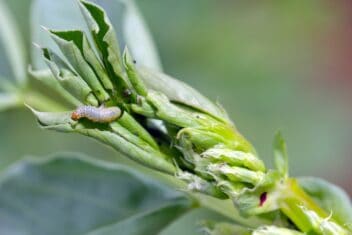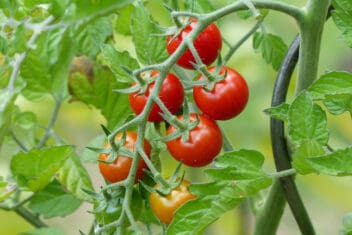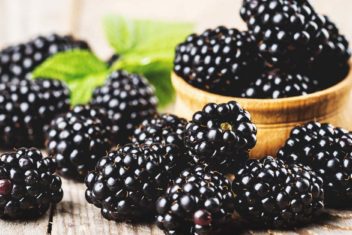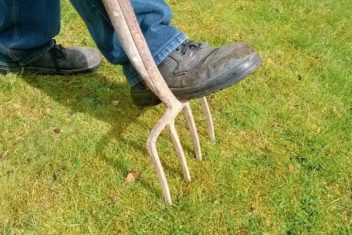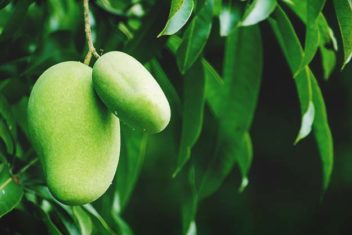I live in a climate where the temps are brutally low in the winter. Unless a gardener in my area has access to a greenhouse or makes the effort to build and install cold frames, there’s very little gardening happening between November and early March. We often get dumps of snow up until April, and although the warm weather can make a comeback in March, the ground stays frozen for weeks.
As a gardener who enjoys eating fresh, homegrown food, I’ve always found those 5 months of hard winter weather to be challenging. I hate not having access to fresh greens in particular. At the supermarket, lettuce, kale, chard, and spinach are so much more expensive in the winter months, and they don’t taste as good.
I’m in the process of calculating the cost of building cold frames for next year, but until then, I grow a small number of greens indoors.
If you’re in a situation like me, or maybe you lack the outdoor space to grow much, indoor gardening can be the solution. Even if you’re locked in the city with nothing but a window sill, you can still have access to the freshest food imaginable. There are just a few tricks you need to know.
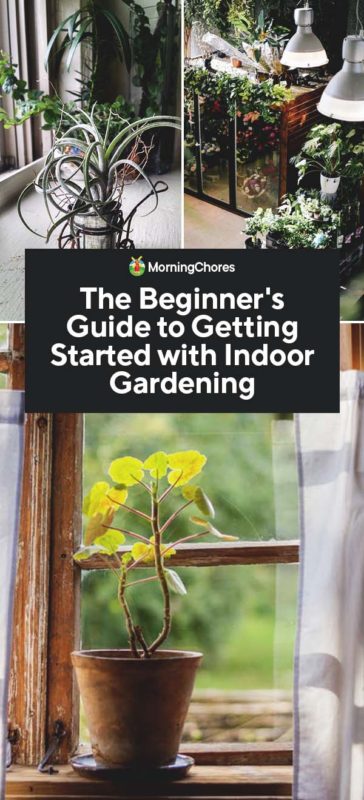
The Benefits (and Challenges) of Growing Indoors
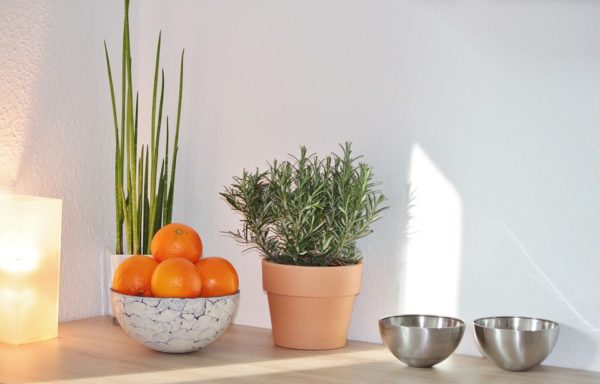
Beyond necessity, there are some benefits to growing indoors that you may want to consider even if you have plenty of outdoor space. Here are some of the benefits of growing greens indoors:
- Easy monitoring and harvesting. No need to head outside in inclement weather.
- Constant temperatures mean year-round growing regardless of the climate.
- Fewer pests to deal with. No squirrels or hungry rabbits are likely to munch on your veg. Insect pests are less likely as well.
- You have better control over the temperature and environment than if you were to grow outside.
- Experimenting is easier because you have greater control over all the variables. Because you’re likely to harvest when plants are smaller, you can restart and try things again quicker than you would if you were growing outdoors.
- If you have kids, growing indoors is a great way to get kids excited about gardening. Having plants in an accessible area like the kitchen means children will see the progress each morning.
- If all you have is access to a balcony or small patch of yard, growing indoors can provide you with extra space.
The Challenges of Growing Indoors
- You can’t rely on Mother Nature. You have to diligently water your plants and provide enough light.
- Growing indoors can be more expensive thanks to the cost of lighting and indoor growing supplies.
- You’ll need to set aside a spot to grow indoors, which means it can take up valuable indoor space.
- In the winter, dryness can really mess with the growth of certain plants. You may need to invest in a humidifier.
- If you have pets, you may need to keep plants away from them. My dogs, for instance, love to eat dirt. So I need to keep potted plants at a height they can’t reach.
Planning Your Indoor Garden
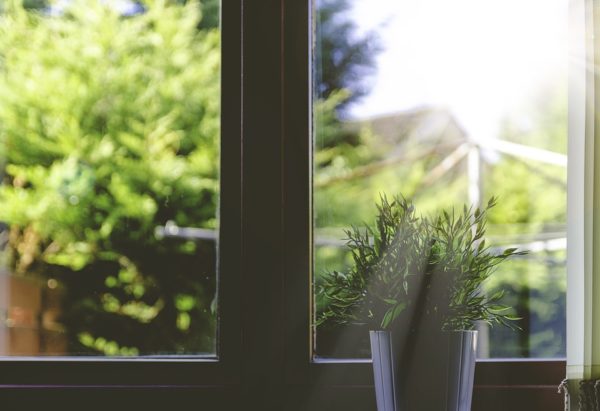
Before you start your indoor garden, consider the following:
1. Time
How much time do you have to care for and maintain your garden? Growing a few greens won’t require a huge chunk of time, but you’ll still need to commit to the project. Are you willing to take time to check on your plants and keep them well watered? If you’re short on time and tend to kill most houseplants, you may want to consider some kind of automated indoor gardening system.
What about when the time comes to harvest your greens? You can’t leave them there forever. At some point, you’ll need to eat them. Will you be able to keep up with growth and cut as plants reach maturity?
2. Location
Where are you going to put your indoor garden? The logical choice for most is the kitchen. The closer you have your greens while you cook, the more likely you are to think of including them in your recipes. It’ll also be easier to harvest them when needed.
Unless you choose a growing system that includes a light or you plan on purchasing a grow light, you’ll need to place your indoor garden close to a window that will provide enough light for your plant to thrive.
3. Size
If you’re just starting out, keep things small. I know it’s tempting to go all out, but it’s much easier to manage and maintain one or two pots to start with. I made the mistake when I started my indoor plant wall of purchasing multiple plants from a nursery and assuming they’d all have the same care requirements. Boy was I wrong!
Make sure you have enough space for your indoor garden. Don’t purchase multiple plants and containers only to arrive home and find yourself disappointed that nothing fits in the spot you picked as you envisioned.
One great thing about growing greens like lettuce and spinach is that they don’t typically require a lot of room. Many greens have shallow root systems, which make it easy to pick out and source containers. You’re likely to find lots of suitable pots at a budget price point.
4. Your Vision
Finally, don’t forget to follow your vision for your indoor garden. I don’t mean copying that dream garden you spotted on Pinterest. Don’t go overboard and blow your budget and overshoot your abilities straight away. However, think about why you want an indoor garden and how you’re going to use it.
Are you looking to plant greens to save money in the winter months? You may want to put your pots on a cart that can be moved outdoors or out of the way in the summer.
5. Choosing Plants
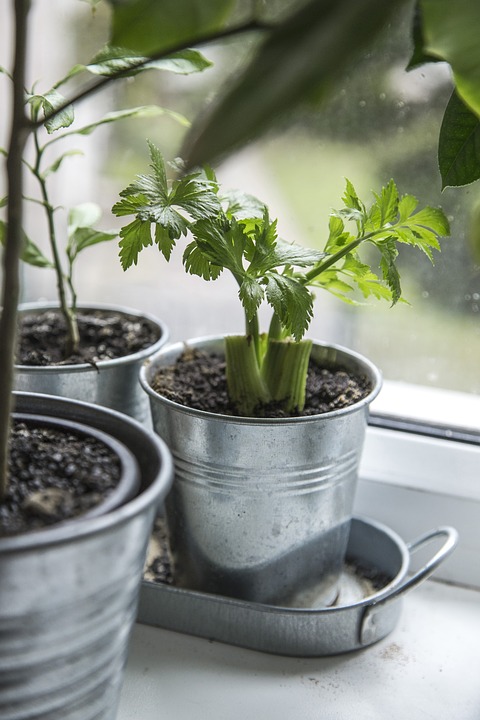
It’s all too easy to get caught up and go crazy buying starter plants at a local nursery. You might find yourself back at home with greens you don’t even like.
Think about what you’ll use on a regular basis. Do you love to cook Asian dishes? Think about growing Thai basil or bok choy. Are you crazy about salads? Grow your favorite type of lettuce. Are you more interested in growing herbs as you try to cook your way through all your recipe books? Choose a few of your favorites.
Pro-tip for beginners: Choose plants with similar care requirements. You can water everything at the same time and you won’t get confused about the needs of individual plants.
6. Best Plants for Indoor Gardening
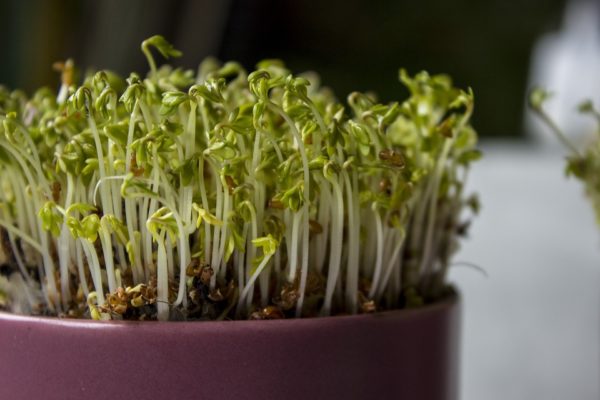
Here are some of my favorite greens for indoor growing. Note, these are my favorite in part because I find them simple to grow inside, but also because they fit into my cooking and eating habits.
- Leafy lettuce
- All varieties of kale
- Parsley
- Cilantro
- Pac Choi
- Arugula
7. Tools
What do you need to grow indoors? It’s simple:
First, a good source of lighting. You could rely on sunlight, but in northern areas, you’re not likely to get nearly enough sun to have thriving plants. Find an option that offers full-spectrum light. Again, start small. Lighting can get expensive, and you can always add on later.
Next, containers. The style and size are up to you. I don’t suggest opting for super small pots, though. Choose containers that allow for drainage and that fit your style and space.
Finally, a good soil mix is crucial and isn’t hard to find. An indoor-oriented potting mix should do.
8. Start from seed or plants?
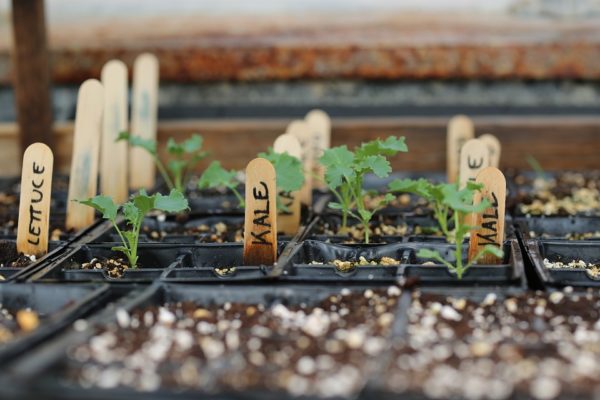
The choice is entirely up to you, but if you’re well into the winter, it may be a challenge to find starter plants for your indoor setup. You may be stuck starting seeds.
Starting from seed is a more involved process, but it’s super rewarding. If you’re intimidated, try starting out with herbs like basil or microgreens. The possibilities are nearly endless!
Maintaining Your Indoor Garden
1. Water
Unless you purchase an indoor gardening system that does some of the work for you (e.g., automated light timer), you’ll need to keep an eye on your plants.
Regular watering is necessary, especially for greens. If you’re growing herbs, however, check to make sure you’re providing the right amount of moisture. Not all herbs like moist soil.
2. Fertilizer
If you’re growing greens to eat or cook with, you don’t need to bother with fertilizer. Your plants likely won’t be around long enough to require additional nutrients. Buy a well-balanced potting mix and change out the soil once you see plants aren’t as vigorous. It’s a lazy strategy, but it works well!
For longer-lived plants and hungry feeders, I purchase fertilizer spikes that are easy to insert into plant pots. No measuring or calculations required.
One advantage of growing indoors is that you can observe your plant babies closely each and every day. It’s easy to spot problems and address them straight away. You’ll quickly see if there’s a pest problem and you’ll notice if something seems awry because you’ll be so used to passing by your plants.
3. Harvesting
When the time comes to harvest your greens, you can pluck the entire plant or cut pieces as needed. Harvest the outer leaves first. Not all plants are cut-and-come-again, though. Herbs should be harvested frequently to encourage growth and prevent flowering.
4. Light
Some plants will do just fine next to a window, while others may need supplemental lighting. Some microgreens hardly need any light at all. Be sure to understand your plant’s needs are.
Best Indoor Gardening Products for Thriving Plants
If you’re not interested in putting together a DIY setup, there’s no shame in choosing an indoor gardening product to help you grow what your heart (and tummy) desires. Here are some of my favorite products for growing plants indoors. Many are also great for starting seeds that can then be transplanted outdoors.
1. Click and Grow
Click and Grow’s Smart Garden 3 is one of my favorite kitchen accessories. I can easily spot when the water level is too low, and the lighting is automated, so I don’t need to think about turning the unit on or off. It’s also compact enough for my kitchen countertop.
2. IKEA’s Indoor Gardening Lineup
Did you know that the Swedish furniture giant now offers indoor gardening accessories? The lineup is sleek and stylish in true IKEA form. It’s currently not yet available in North America, however.
3. Watering Globes
Hate watering but love having plants indoors? I absolutely love these little watering globes. They look attractive and although they’ll need to be refilled periodically, they take the guesswork out of watering plants.
4. Self-Watering Container
Any self-watering pot will do, but I particularly love these exceptional containers. A small indicator lets you know when the water level is low. It’s an excellent choice for planting your favorite herb.
5. Fertilizer Spikes
I don’t use fertilizer spikes on my greens, but they’re handy for other houseplants because they take the guesswork out of fertilizing.
